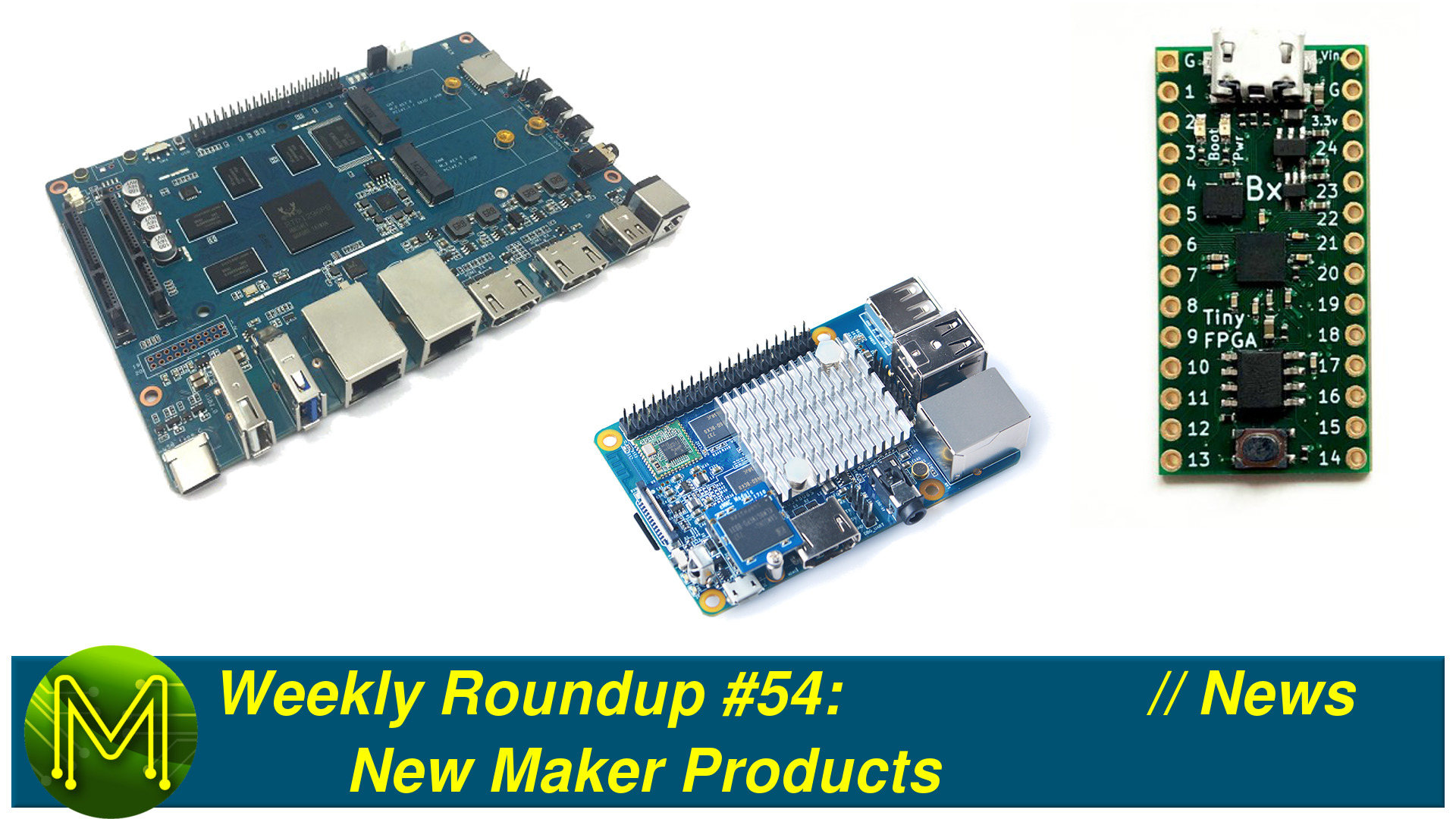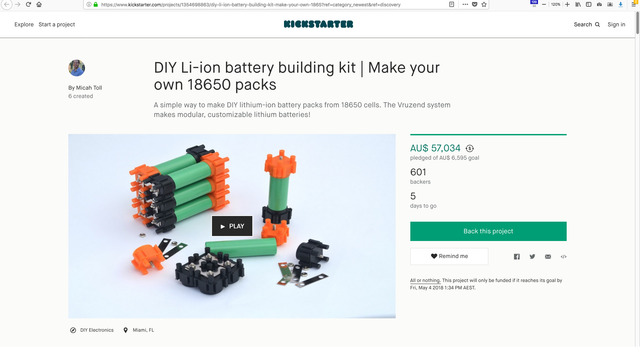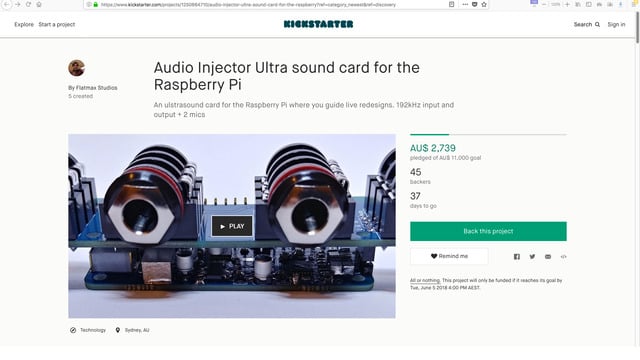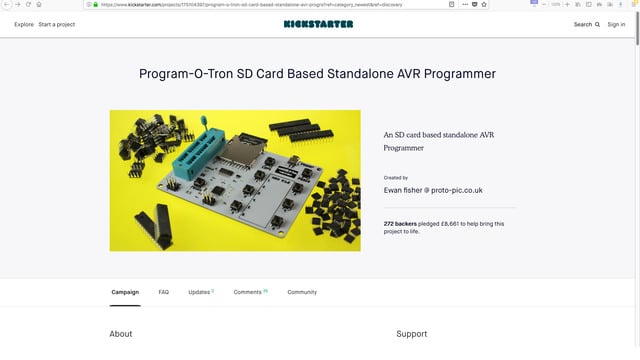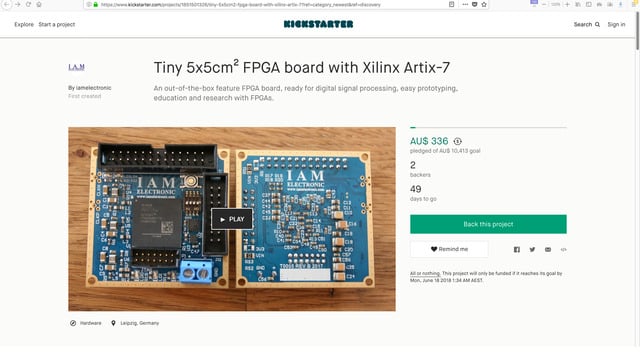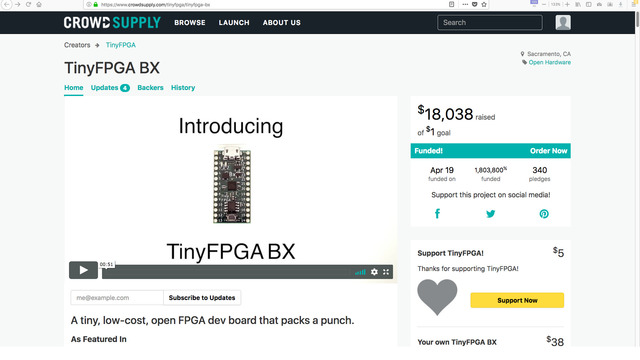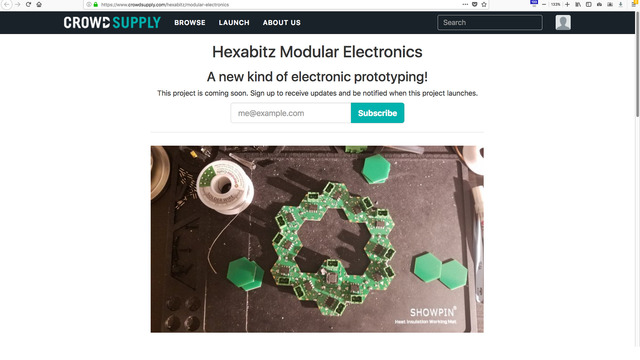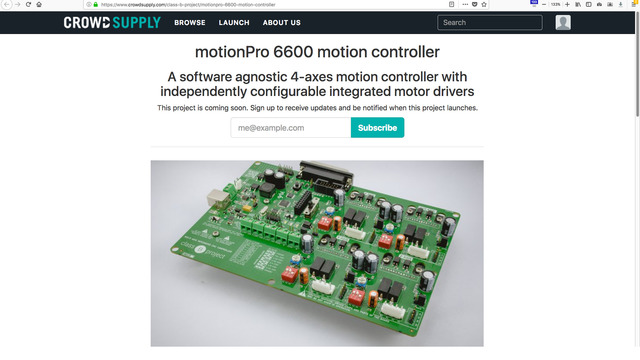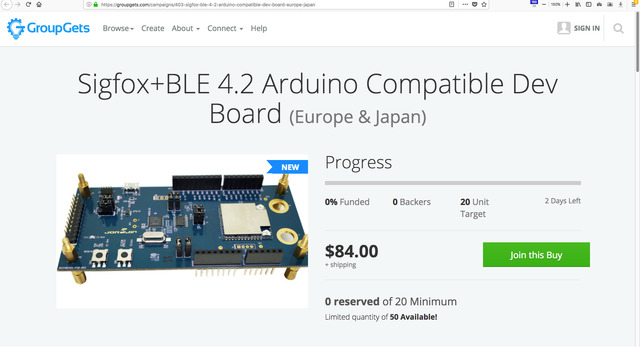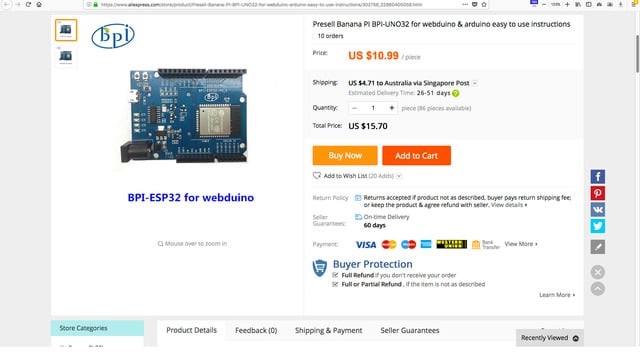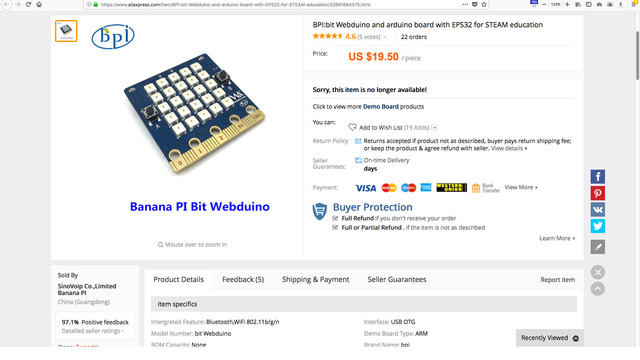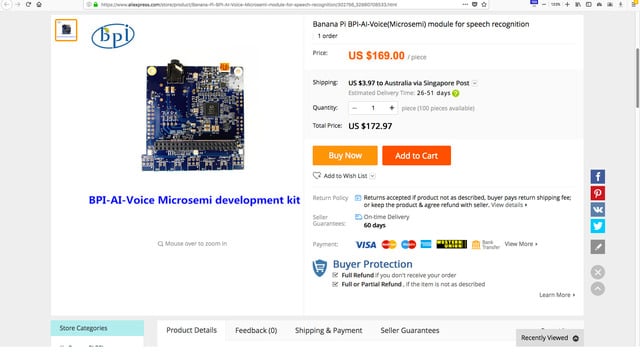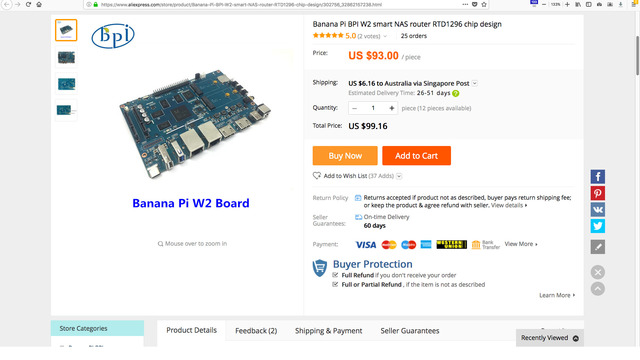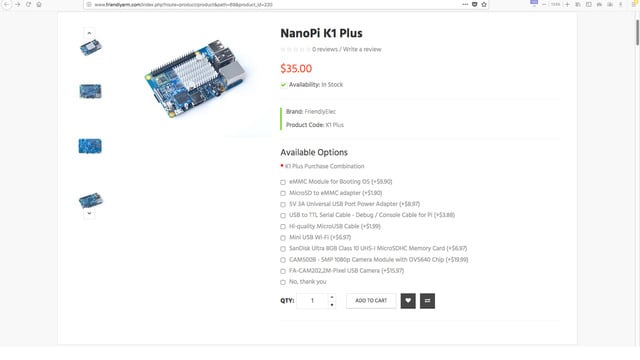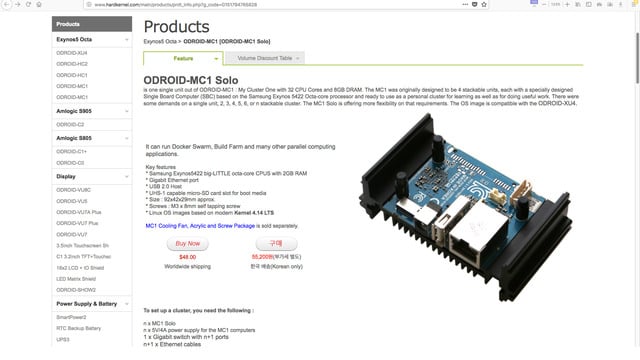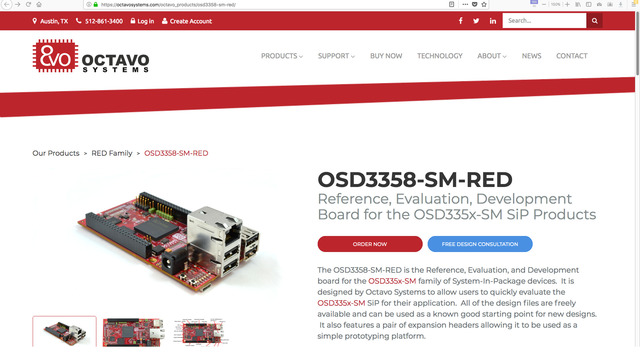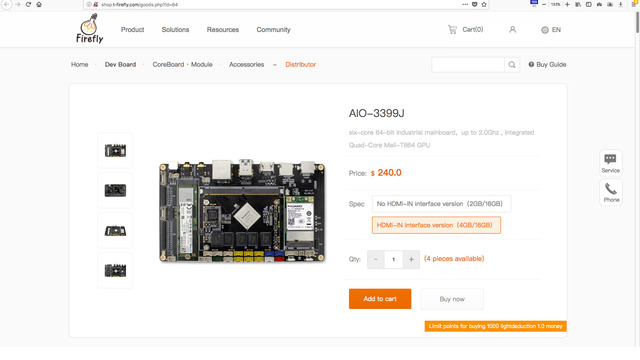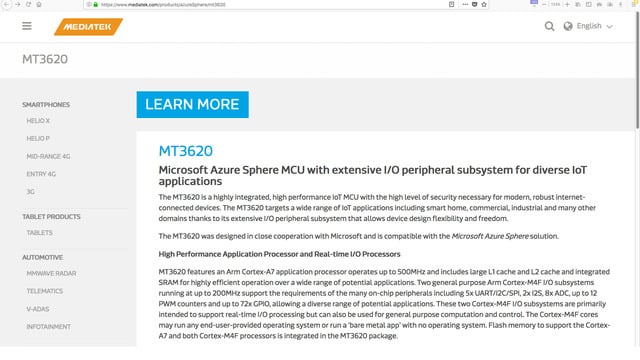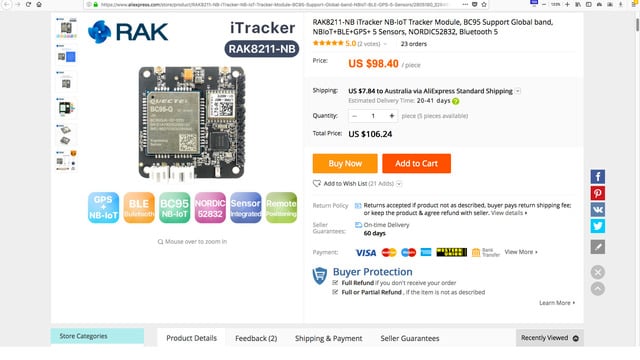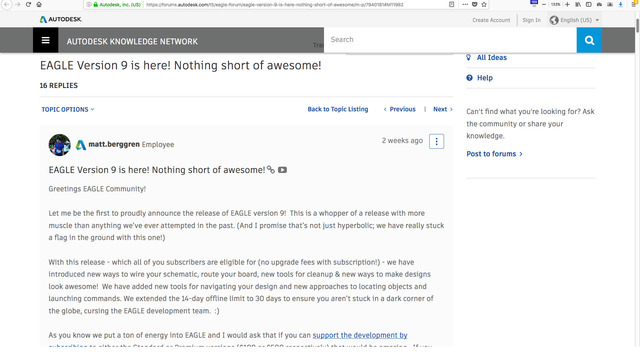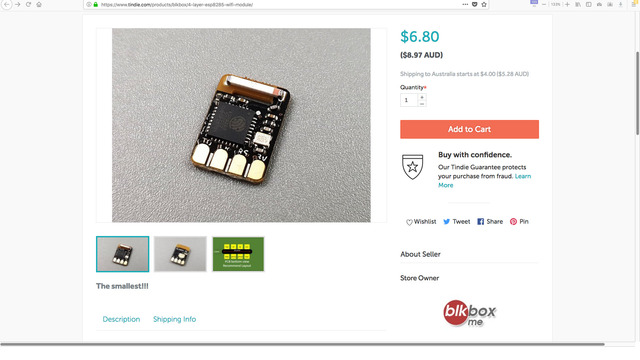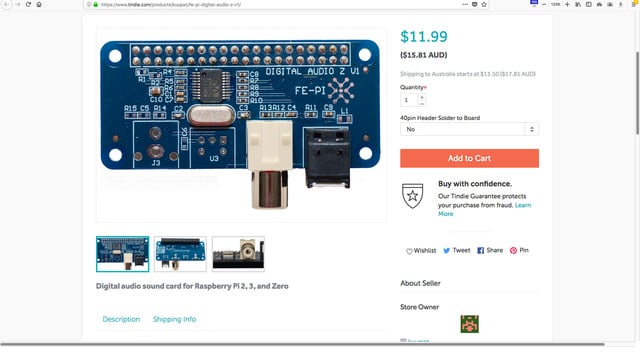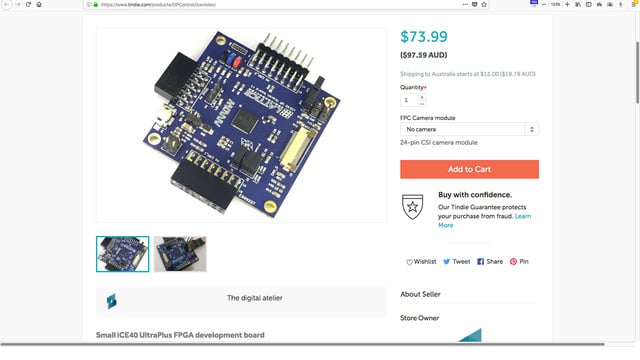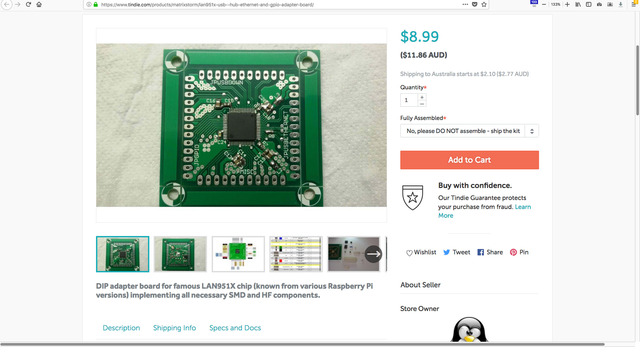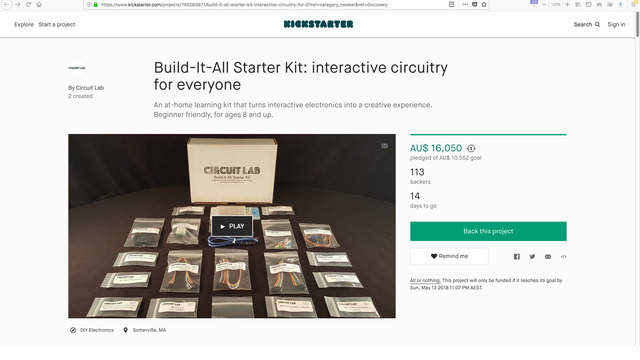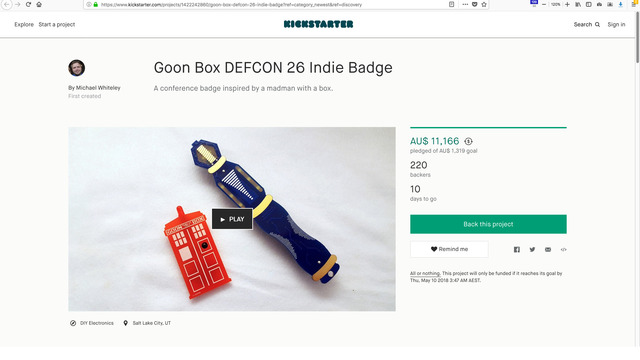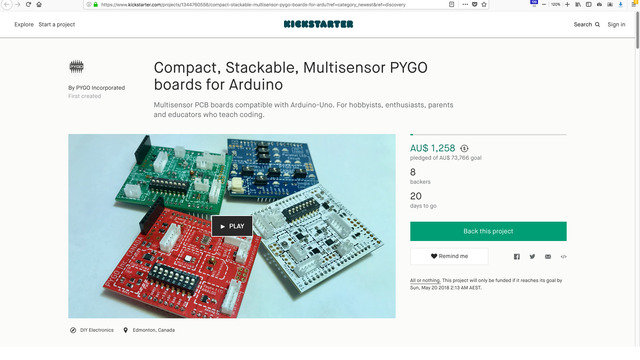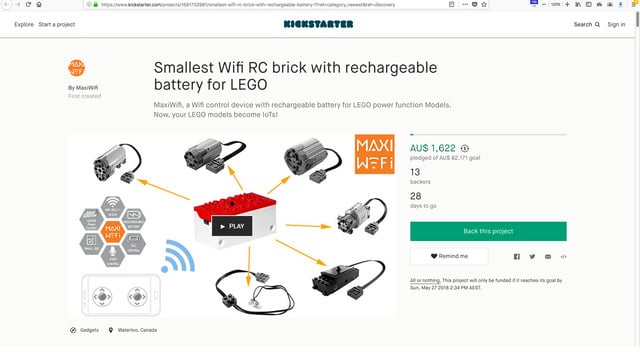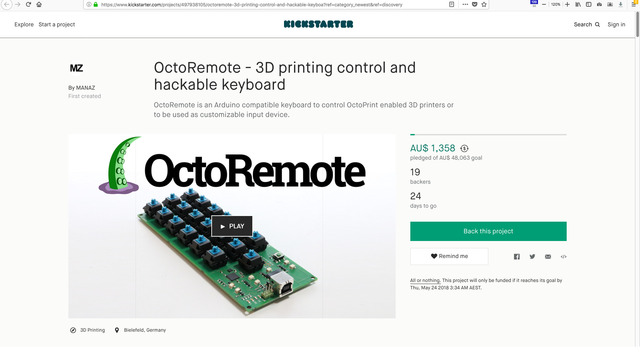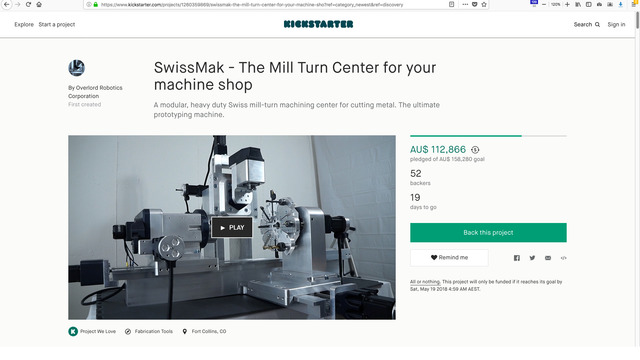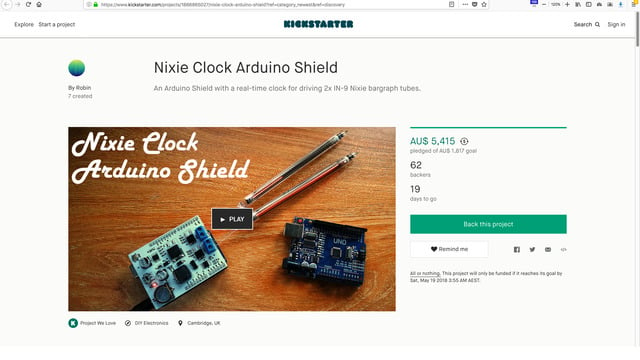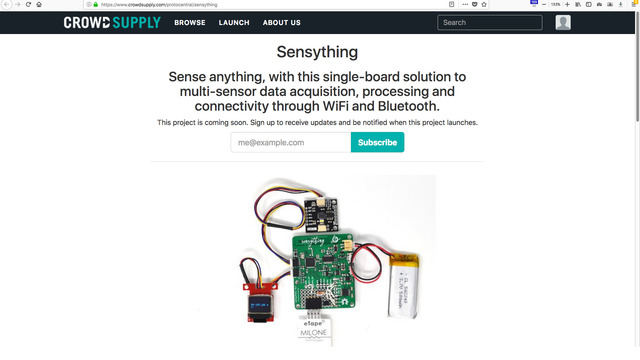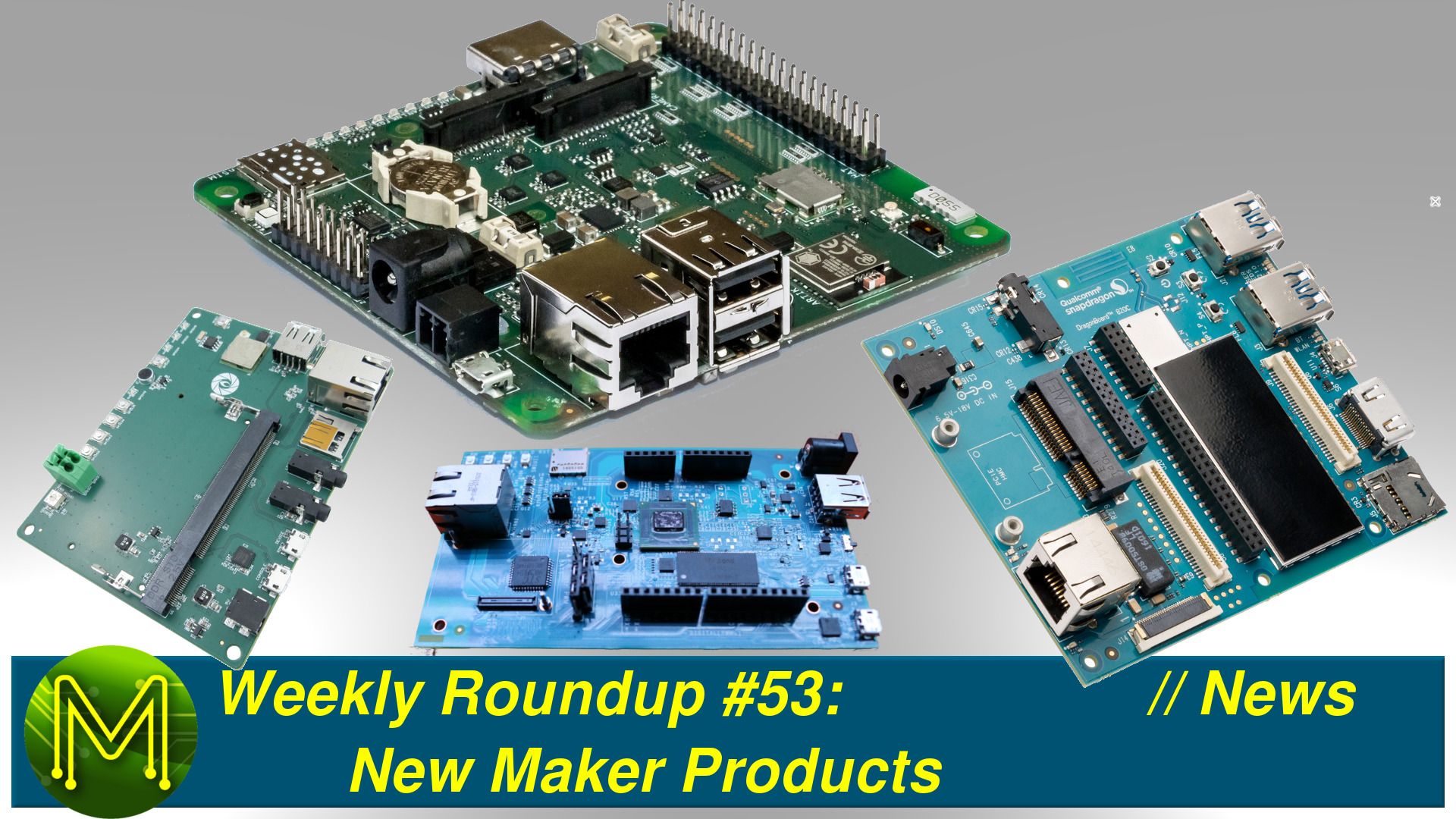Weekly Roundup #54 – New Maker Products // News
Watch "Weekly Roundup #54 – New Maker Products // News" on YouTube.
Hi, this week’s Weekly Roundup is a little short as I was pretty busy last week with contract work, and I promise… no more trumpets.
ERROR:not .src - map[alt: class: control: ctx:0xc00bcdb7c0 height: href: id:9L-EnJ9OVpA inline: size: span: src: style: thumbnail: title:Weekly Roundup #54 - New Maker Products width: xml:]
Crowd Funding
KickStarter
DIY Li-ion battery building kit
If you’ve ever tried to quickly DIY battery packs together from 18650 cells, then the usual method is gaff tape and soldering. Making it more permanent is another thing. This Kickstarter aims to solve that by providing a way to build up a battery configuration in multiple combinations of serial and parallel. Looks pretty good.Audio Injector Ultra sound card
There’s been many sound cards for the Raspberry Pi in the past, but not many high-fidelity ones. This Kickstarter allows sample rates up to 192kHz at 24bit resolution with RCA and SPDIF inputs and outputs, two MEMS microphones and a Cirrus Logic stereo CODEC. There’s also a daughter board that provides balanced line drivers.Program-O-Tron
This looks pretty cool. If you have a need to flash a whole lot of AVRs, then this standalone programmer will flash almost the whole AVR lineup. Just chuck a HEX file onto an SD card, put your AVR in the ZIF socket and press a button. Easy. It can also flash MCUs using an ICSP header.Xilinx Artix-7
I predicted last year that 2018 will be the year of the FPGA. Seems we’re on track with that. This Kickstarter provides a Xilinx Artix-7 FPGA on a tiny 5 by 5 cm PCB. It also provides a bunch of buttons, LEDs, JTAG header and 36 GPIOs, powered from 5 to 17v. Note, you can also pick this up on Tindie.Crowd Supply
TinyFPGA BX
While over at CrowdSupply, Luke Valenty has been pretty busy with his next version of the TinyFPGA. The BX contains the Lattice ICE40LP8K FPGA, 8Mbit SPI Flash, 3.3 and 1.3v LDOs and breaking out 36 GPIOs. The TinyFPGA is shaping up to be the “Teensy” of the FPGA world. So if you want to get into FPGAs, go pick one of these up.Hexabitz
In pre-launch at CrowdSupply there’s the Hexabitz. These are hexagon PCBs with a range of sensors and MCUs that connect in a “novel wired-mesh decentralized network concept”. Not sure what that means, but I suspect it’s using a 1-wire interface that connects to adjacent tiles while providing power and passes messages along a chain of tiles. Interesting idea.motionPro 6600
Another one in pre-launch. The motionPro is a motor driver board that can control up to 4 stepper motors at up to 4A continuous per motor with control over current limits and stepper resolution. Access is via plain old TTL or USB with opto-isolators and noise filters for added protection on limit switches and FET drivers. Runs off a 12 to 36v DC supply.GroupGets
Jorjin WS2118
Over at GroupGets you can currently pick up a new wireless dev kit from Jorjin. This runs the STMicro BlueNRG which provides Bluetooth and the STMicro S2-LP providing SigFox. 38 GPIOs are pushed out on the JorJin module, but only a handful are available on the Arduino headers.Honorable mentions
Banana PI BPI-UNO32
The Banana Pi guys have gone… er… Bananas… They’ve released a bunch of new boards. The first is the Banana Pi UNO32. This is a essentially an ESP32 module in an Arduino format PCB with the usual buzzer, LEDs, buttons and USB port. Not so exciting, but then …BPI:bit Webduino
… they are also hedging their bets with another ESP32 based board, this time in the microbit form factor. It contains pretty much the same lineup as the original microbit boards, with 9DOF IMU, 25 RGB LEDs, buttons and buzzer.Banana Pi BPI-AI-Voice
Then there’s the Banana Pi AI Voice, which is a Raspberry Pi hat providing speech recognition. It’s a little pricey at US$170, but runs the MicroSemi ZL38063 audio processor, with an array of 4 MEMS microphones, two class D audio amps and expansion headers for additional microphones and GPIOs. So far, the board works with Amazon Alexa, but no information on support for any other platform.Banana Pi BPI W2
The last Banana Pi board that’s been released is the Banana Pi W2. This is a major step up from their previous Banana Pi R2 router and is more of a NAS board than anything else. For a bit less than US$100 you get a quad-core Cortex-A53 Realtek RTD1296 SoC, 2G DDR4 RAM, 8G eMMC expandable to 64G, SD, 2 SATA3 ports, 3 GbE ports, 4 USB 3.0 with a USB Type C port, RTC, Pi GPIO header, mini DisplayPort, HDMI out supporting 1080p, and the icing on the cake; HDMI in and two M.2 key slots. One supporting PCIe 2.0 and the other 1.1 with SDIO. The only downside to this board is the fact that it only supports 1080p. Everything else is right on the markNanoPi K1 Plus
Not to be outdone, the Friendly guys have come out with another Pi form factor board called the NanoPi K1 Plus. The new board is identical to the NanoPi K2, but moves away from the Amlogic S905 SoC back to the Allwinner H5, which means you only get 30fps at 4K on HDMI, swaps out the WiFi/Bluetooth module for a WiFi only variant and moves back to the horrible microUSB connector as a power source.ODROID-MC1 Solo
Way back in Weekly Roundup #47 we saw the ODROID-MC1. Now the HardKernel guys have come out with the ODROID-MC1 Solo. This is the same as the ODROID-MC1, but instead of a stack of 4 XU4S boards, you get just one. This drops the price from US$220 to US$48. Nice.OSD3358-SM-RED
Octavo Systems are the guys who make the System-In-Package for the BeagleBones. They are now dipping their toes in the SBC market with the OSD3358-SM-RED. This board uses the same SIP as the PocketBeagle, which not only runs the OSD3358, but has 512M DDR3 RAM, 16G eMMC, SD, GbE, 4 USB2.0 ports 9DOF IMU, LiPo battery management and the BeagleBone expansion headers. Power is via the more sensible DC jack.Firefly AIO-3399J
The Firefly guys are also at it again. This time they’ve released another RK3399 based board. Although it’s a bit expensive, setting you back US$240, you do get an industrial quality board with the 2GHz hexa-core RK3399, 2 or 4G DDR3 RAM, 16G eMMC, M.2 key supporting SSD and PCIe for 4G LTE, SD, DisplayPort, 2 HDMI out and in, GbE, WiFi, Bluetooth, audio in/out and a bucket load of GPIOs… This thing has everything. No wonder the price tag is so high.Microsoft Azure Sphere MCU
One of the problems with the IoT market is that noone really has a good solution addressing the security issues that we’ve seen in recent years. Things like fridges acting as DDoS nodes, hi-jacking cars via 4G. The industry really needs a whole lot of standardization. Microsoft are looking at doing this with their recently announced Azure Sphere. This is both a hardware component, which will support the MediaTek MT3620 and a cloud service. The MT3620 runs a 500MHz Cortex-A7, an isolated 200MHz Cortex-M4F and WiFi module driven by an Andes N9. So, it’s a bit of a powerhouse, with the option of going into low power mode. MediaTek isn’t the only chip maker to look at producing Azure Sphere compliant MCUs, Nordic, NXP, Qualcomm, ST Micro and Silicon Labs are heading into this deal as well. It seemed only yesterday that Steve Ballmer was calling Linux a cancer.RAK8211-NB iTracker
The RAKWireless guys have released a new module that provides some fairly accurate GPS tracking. It runs the nRF52832 at the core with NB-IoT provided by the Quectel BC95-G and GPS by the Quectel L70-R. It also has 6DOF IMU, pressure, humidity, temperature and light sensors. All powered from 3.5 to 18v via solar powered battery.Eagle 9
Ever since Autodesk bought Eagle, they’ve been making some pretty consistent improvements. Well, the subscription charging model wasn’t an improvement, but on the software side there’s been several. Eagle 9 has just been released. This brings several changes to design workflow. Quick Connect allows you to define groups of signals in an abstract way, move them around, save and recall them in new designs. Quick Route allows you to route signals that are grouped together, clean up grouped signals or complete a route automatically. Then the Design Manager gives you a much better overview of your PCB and schematic allowing you to find and manage components and signals easier.Maker Shops
Tindie
Over at my favourite Maker store, Tindie, there’s a few new interesting things.
ESP8285 module
This has to be the smallest ESP module around. Only 10 by 14mm with 6 GPIOs pushed out.FE-Pi Digital Audio
And another digital audio card for the Pi. This one is similar to the audio injector Kickstarter but only has audio out. Runs the Cirrus Logic WM8804 and provides SPDIF, RCA and TOSLINK audio outputs.iCEVision
Another FPGA board, this one is aimed at vision projects. Not only does it have an iCE40 FPGA, but 8MB SPI flash, PMOD and ArduCam connectors and MIPI-CSI header.LAN951X breakout
The LAN9512 is used in the ubiquitous Raspberry Pi. You can now get a breakout board for it giving you a four port USB hub and Ethernet controller.BorosRf2
Honorable mentions
A few bits and pieces that I didn’t include in my video.

